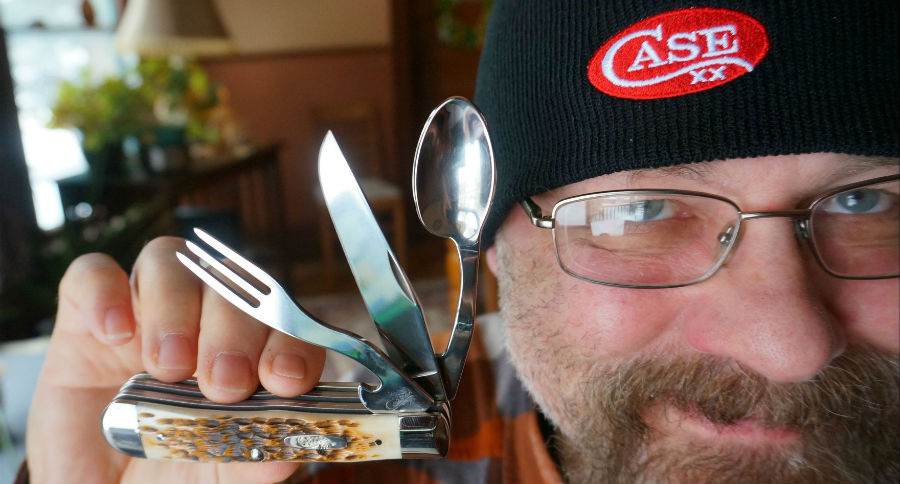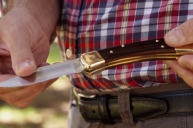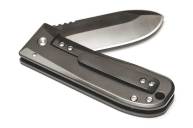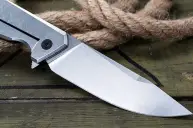I gave the Case Knives Hobo model pocket knife a pretty good field testing by generally abusing it. Here's how it measured up.
I love pocket knives. I've carried one since I was a kid. I also love fixed blade belt knives, but a good pocket knife has more applications in day-to-day life than most anything else.
You can carry it in virtually any situation where you're wearing something that has a pocket. Blue jeans or dress pants, summer shorts or puffy snow pants, a pocketknife works for each of them. I like that.
This article is about a specific and somewhat unusual kind of pocket knife, a Hobo-style knife made by W.R. Case & Sons Cutlery Co.. The Case Hobo is a tool that has a fork and spoon incorporated into the handle.
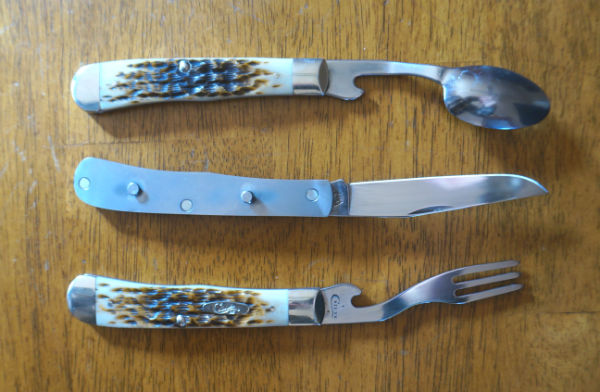
The hobo pocket knife was originally designed as a multipurpose eating tool for campers, travelers, Boy Scouts, and folks who otherwise had silverware unavailable to them; it's a design that's actually quite old. Case carries on that tradition with their Amber Bone Peach Seed Jig Hobo.
What's different?
A few things set the Case Hobo knife apart from other multitool-like hobo knives. One, the entire system only has three tools: a fork, spoon, and knife blade. Many other hobo knives have other tools incorporated into them along with the three eating utensils. Picture things like a corkscrew, scissors, leather punch, file, and so on. The Case design is sleek and unencumbered.
Secondly, most multitool hobo knives have a fork on one end and a spoon on the other. This, of course, makes using the tool a bit cumbersome. And how in the heck are you supposed to cut your food with the knife in one hand while holding the fork in your other hand when each utensil is attached to the same handle?
With the Case Hobo, the three utensils come apart and are able to be used separately.
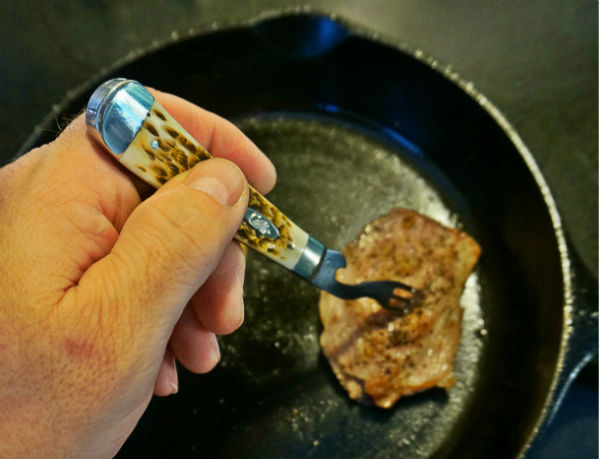
Case uses a slip-apart or slot-knife design to enable the three tools to separate. This design is at least two hundred years old, but Case appears to have streamlined it. You simply lift the spoon or fork up and extend it, and then the individual handles can be easily slipped apart thanks to two locking pins and slots.
Once you've finished eating, reverse the process and everything folds up neatly and tightly. The pocket knife again feels as solid as if it were a single inseparable unit.
Thirdly, you have the high quality workmanship that Case is known for. This does not feel like a cheaply made knife. Rather, it feels like a quality precision tool, with perfectly milled, high quality materials that fit together exceptionally well.
Specs
Weighing nearly a half-pound at just over four inches in closed length, this is a heavy pocket knife, and almost a little too heavy for everyday carry. Unfortunately, I didn't get a belt sheath with mine, which I think would have made carrying it much more appealing. Note to self: order carrying case.
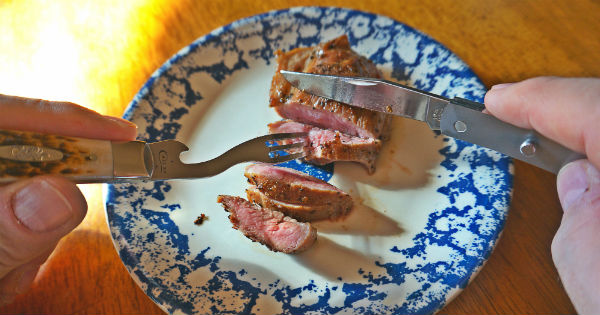
The handle material is made of Case's Amber Bone. This is a tough bone handle made from Zebu (Asiatic humped cattle) shin bones. These smooth, natural bones are attractively carved and dyed to look similar to antler. They are the kind of handles we've come to associate with Case knives, just as we do the iconic Case XX logo.
The utensils are Tru-Sharp stainless steel. The knife is a super sharp standard clip point, with a blade length of 3.24 inches. One thing I really like about the knife blade is that when you have only the folding knife opened and have ahold of the handle, it feels very secure. The thickness and heft of the handle gives a completely different, more confident grip to this pocket knife than you get with some other less substantial folders.

Both the spoon and the fork have bottle openers incorporated into their handles. Both openers work fine, although the spoon's bottle opener seems a tad thinner than the fork's.
Chowing down
I used each utensil on multiple meals. The three-pronged fork worked fine on everything but salad, although that could be more a function of my tendency to take big mouthfuls. I don't want to say for sure, but it seemed a little too small for my liking in that department. It performed nicely on everything else I stabbed with it.
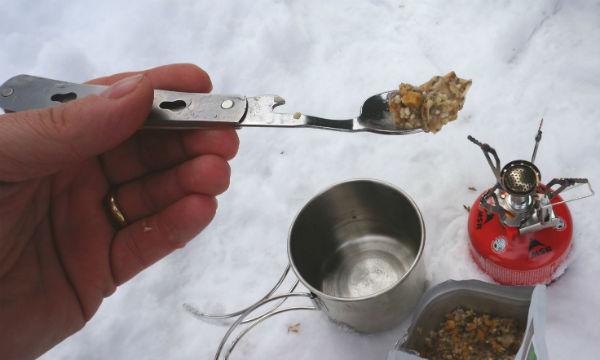
At first I thought that the spoon bowl was much too small to be of much use. I was proven wrong on that count, because it handled hefty mouthfuls of oatmeal, scrambled eggs, and yogurt just fine.
It is too small to handle soup satisfactorily, but if you're camping you'll likely be drinking your soup anyway. Once you've finished drinking your soup, you can then use the spoon to scoop out the small bits.
The clip blade knife worked like a sharp knife should, cutting meat like a razor. I'm not sure how it would stand up against heavy use in a bushcraft situation, but that's not what it's made for. It does its job and seems to do it well.
Every utensil felt comfortable and light in my hand and was easy to clean and reassemble. It did exactly what it's supposed to do, with the somewhat-expected shortcomings of a shallow spoon bowl and small fork. My wife is always telling me to eat more slowly; maybe using the Case Hobo will help me learn to do that very thing!
Withstanding a little abuse
I'll be clear up front: I didn't treat this knife gingerly. I wanted to see if it would withstand a little abuse. When I emptied my pockets, I tossed it rather unceremoniously onto the countertop every day for three weeks. It never came apart and the utensils never shifted.
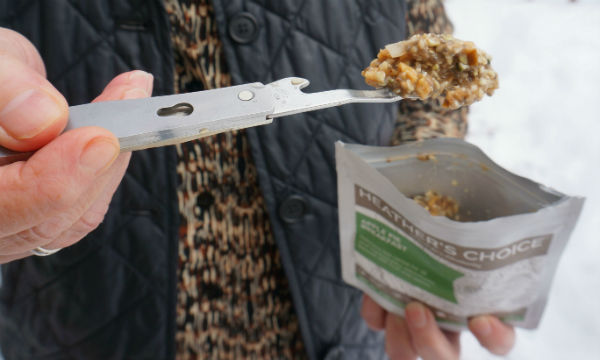
I buried it in the snow on my porch for a couple of nights and in the muddy dirt of a plant pot in the house for two days. The stainless steel blade material and amber bone handle looked as good as new once I wiped them off.
I cut all manner of material and whittled a few sticks with the knife and it stayed sharp. I have yet to sharpen it.
Of course I've only had the knife for about a month, but in that time I'd say the Case Amber Bone Peach Seed Jig Hobo impressively met the challenges I gave it. I'm eager to take it camping and see how it performs in the backcountry. But when I do, I'll definitely be securing it in a carrying case on my belt.
Like what you see here? Experience more articles and photographs about the great outdoors at the Facebook page, Stumpjack Outdoors.
NEXT: WHAT TO LOOK FOR IN A HOG HUNTING KNIFE
WATCH
